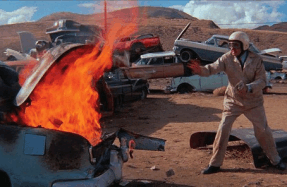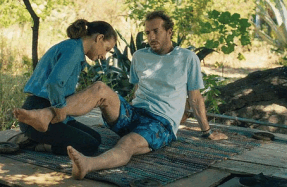
“I am going to kill a man. I don’t know his name and I don’t know where he lives, I have no idea what he looks like. But I am going to find him and kill him…”
—opening paragraph of Nicolas Blake’s The Beast Must Die (1938)
“To enter a moviehouse on Lavalle Street and find myself (not without surprise) on the Gulf of Bengal or on Wabash Avenue seems preferable to entering the same moviehouse and finding myself (not without surprise) in Lavalle Street.” Referring to the Buenos Aires street traditionally associated with moviegoing, Jorge Luis Borges felt compelled to open his positive review in the literary magazine Sur of the recent Argentine film La fuga (1937) with this “confession,” lest someone accuse him of blind patriotism. Three months earlier, he had not been averse to express his disdain for the average national cinematic product in the same pages: “This film—Los muchachos de antes, etc.—is unquestionably one of the best Argentine films I have seen, which is to say, one of the worst films in the world.”
An avid moviegoer, Borges was at this point on the verge of a major breakthrough. Following a near-fatal accident in 1938, he began to develop the singular writing style that would bring him international renown. At the same time, a cinematic phenomenon was on the horizon that, in retrospect, would incorporate La fuga and many other films, similar in a way to the conundrum Borges formulated in his essay “Kafka and his Precursors.” “His work modifies our conception of the past, as it will modify the future,” Borges observes, opining that the idiosyncrasy (and influence) of a writer inevitably changes our outlook on earlier works with similar qualities; the same applies to a movement such as film noir, a term that gained traction as a description for a certain type of Hollywood crime drama made during and after WWII.
Even as noir has become one of cinema’s most popular brands, its exact nature has remained a source of debate, down to its defining characteristics and categorization. Is it a cycle? A genre? A mood? A style? I’ll stick by the definition that seems to work for more or less all dedicated viewers of noir: I know it when I see it. And, like most people, I’ve seen myriads of examples proving that the former designation of a genuinely American style is moot, even as the noir breakthrough originated from passion for a beloved type of Hollywood entertainment and became a cornerstone of cinephilia everywhere by the ’70s. Noir’s






